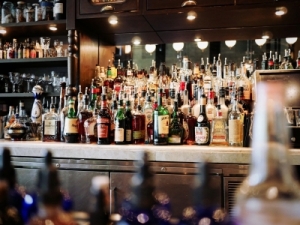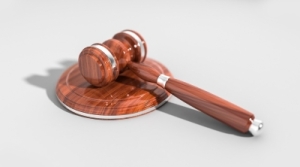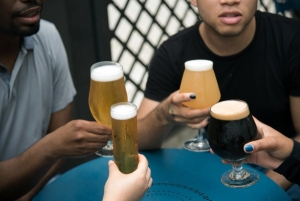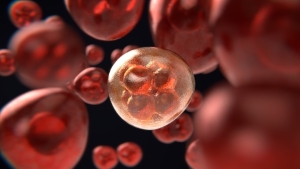cisa
Research in Sweden and the United Kingdom Shows a Gap Between Official Drinking Recommendations and Drinkers’ Experiences
October 21, 2025Research in Sweden and the United Kingdom Shows a Gap Between Official Drinking Recommendations and Drinkers’ Experiences
A study showed that individuals create their own definitions of risky drinking based on personal experiences, not on recommended quantities.
A new study published in the journal BMC Public Health investigated how adults attempting to reduce their alcohol consumption perceive “risky drinking” and interpret official health guidelines. The research, conducted with 308 participants from Sweden and the UK, revealed a significant disconnect between medical recommendations and how people actually think about alcohol risks.
Methodology and Key Findings
Researchers analyzed written responses from participants seeking online help to moderate consumption. When asked about their definition of “dangerous drinking,” the identified patterns were subjective, based on drinkers’ experiences and consequences of use, rather than abstract categories from official guidelines:
Definitions based on consequences, not quantities:
- Losing control over how much is drunk;
- Using alcohol to cope with depression, anxiety, or loneliness;
- Memory blackouts;
- Harm to work, family, or relationships;
- Obsessive thoughts about the next drink.
Notably, few mentioned specific alcohol quantities, and when they did, the numbers cited significantly exceeded official recommendations.
Reactions to Official Guidelines
After describing their personal perceptions, participants were presented with their countries’ guidelines (maximum 10 standard drinks/week in Sweden; 14 units/week in the UK). Reactions fell into three main categories:
- Skepticism (majority): “Limits are too low; most people I know drink more than 10 drinks per week.”
- Denial: “I’ve been drinking above the recommended amount for 40 years and I’m not an alcoholic.”
- Ambivalence: “I know I drink too much and want to cut down, but it’s hard.”
Differences Between Countries
The study identified important cultural distinctions:
- British participants highlighted specific drink types (straight spirits, shots) as risk markers;
- Swedish participants emphasized cognitive aspects such as intrusive thoughts about alcohol and loss of inhibitory control.
These differences may reflect distinct policies—Sweden maintains a state monopoly on sales and stricter advertising restrictions.
Why These Results Matter
The research has direct public health implications:
- Ineffective communication: Numerical guidelines do not resonate with how people process risk daily;
- Prevention barriers: Those who do not recognize their pattern as risky are unlikely to seek change;
- Need for a new approach: Campaigns should address experiential and emotional aspects, not just quantities.
Practical Recommendations
The authors suggest health professionals should:
- Discuss contexts and motivations for drinking, not just volumes;
- Relate guidelines to concrete, recognizable experiences;
- Address indicators such as drinking alone, self-medication, or loss of control;
- Recognize and work with ambivalence about change.
Study Limitations
The study focused on people already motivated to reduce drinking, which may not represent the general population. Participants had an average age of 59 and mostly university education. Responses were relatively short (average 7-8 words), limiting deeper analysis.
Conclusion
The study demonstrates a gap between how health authorities communicate risk and how individuals perceive it. To increase effectiveness, guidelines and prevention campaigns need to incorporate the experiential language people naturally use to assess their own risk, focusing on consequences, control, and context—not just abstract numbers of drinks or units.
References:
- Crawford J, et al. Personal perceptions of risky drinking and alcohol guidelines – a qualitative analysis. BMC Public Health. 2025;25:3049. DOI: 10.1186/s12889-025-24296-6
How to Protect Yourself from Illegal and Counterfeit Alcoholic Beverages
The consumption of illegal alcoholic beverages represents a serious health risk. Recent cases of methanol poisoning in Brazil highlight the importance of paying close attention to the source of what you consume. Methanol, a highly toxic substance irregularly used in the production of counterfeit drinks, can cause irreversible damage such as blindness and even death. Understand the dangers of illegal alcohol and learn how to protect yourself.
Recently, several alarming cases of methanol poisoning have been reported, especially in the state of São Paulo, Brazil. Victims experienced severe symptoms such as blindness, intense pain, and organ failure, with some unfortunately resulting in fatal outcomes. These events have reignited warnings about the risks involved in consuming illegal alcoholic beverages.
Illegal alcohol, also known as “unregistered alcohol,” encompasses three main categories: homemade or artisanal beverages produced informally; counterfeit or smuggled drinks; and “substitute” beverages, which are inappropriate for human consumption, such as perfumes and cleaning products. Essentially, illegal beverages are those that, in some way, do not comply with the quality and/or taxation standards required by a country.
It is important to distinguish between the terms “illegal alcohol” and “unregistered alcohol.” While all illegal alcohol is considered unregistered, not all unregistered alcohol is illegal. For example, an alcoholic beverage legal in one country but consumed in another where it is not registered is not necessarily illegal. In other words, these categories are similar but have significant differences.
The latest report from the World Health Organization (WHO) estimated that about 21% of alcohol consumed worldwide is unregistered. Illegal alcohol, by not following sanitary and tax regulations, brings economic and public health consequences. Its composition is variable and may contain, besides ethanol and water, fermentation residues, additives, flavorings, and dangerous by-products such as methanol.
Methanol is a type of industrial alcohol used in products like fuels, solvents, and antifreeze, and is not suitable for human consumption. When ingested, even in small amounts, methanol is metabolized in the body into highly toxic substances such as formaldehyde and formic acid, which can cause nausea, dizziness, difficulty breathing, blurred vision, and in severe cases, permanent blindness, coma, and death. For this reason, its presence in illegal alcoholic beverages represents a severe public health risk.
Alcoholic beverages can be intentionally adulterated with cheap methanol to increase profit and potency. Between 2017 and 2019, approximately 7,104 people were reported intoxicated and over 1,888 deaths occurred in 306 outbreaks of methanol poisoning worldwide, with more than 90% of cases happening in Asia, mainly affecting young men. Additionally, methanol naturally occurs in most alcoholic beverages, originating from pectin degradation during fermentation, and can reach high concentrations during improper distillation, particularly in fruit spirits (up to 2.4% by volume). The maximum methanol allowed in distilled spirits by Brazilian legislation is 20.0 mg/mL of anhydrous alcohol.
A team of researchers and engineers from the Particle Technology Laboratory and the University Hospital of Zurich created a device to measure methanol content in alcoholic beverages. The device, designed to be accessible to the public, sends collected data to a smartphone app that displays methanol and ethanol levels in the drink. It also alerts users if levels exceed safe limits. Unfortunately, the device is not yet available on the market.
Without proper identification, it is impossible to guarantee the authenticity of a beverage, increasing the risk of consuming counterfeit, adulterated, or even dangerous products. To avoid consuming illegal alcohol, consider the following guidelines:
- Be alert to unusual characteristics in the drink, such as strange odors, unusual colors, and consistency;
- Be suspicious of prices far below the market value, especially in online stores;
- Examine the packaging and label to ensure information is clear and complete. The seal should be intact. Watch out for labels with poor printing quality and spelling mistakes. Whiskey, gin, vodka, and cachaça are the most frequently counterfeited beverages;
- Prefer to buy from reliable sources with good reputations that provide invoices;
- Inform yourself about legitimate local brands and products. Be cautious with brands you have never seen before.
Attention and information are the best forms of prevention against intoxications and other serious health damages.
References:
1 - Centro de Informações sobre Saúde e Álcool (CISA). Álcool e a Saúde dos Brasileiros: Panorama 2020. (2020). São Paulo.
2 - Organização Mundial da Saúde (OMS). Global Status Report on alcohol and health and treatment of substance use disorders 2024.
3 - Abegg, S., Magro, L., van den Broek, J. et al. A pocket-sized device enables detection of methanol adulteration in alcoholic beverages. Nat Food 1, 351–354 (2020). https://doi.org/10.1038/s43016-020-0095-9
Alcohol Consumption by Wild Chimpanzees and the Evolution of Human Habits
A study conducted on wild chimpanzees in Uganda and Ivory Coast has brought new evidence about the natural ingestion of ethanol by non-human primates.
The work engages with the so-called "drunken monkey hypothesis," which suggests that primates' attraction to fermented fruits may have favored, over evolution, metabolic tolerance to ethanol. This adaptation indicates a long history of dietary exposure to alcohol when a common ancestor of humans and other primates developed a variant of the ADH4 enzyme (alcohol dehydrogenase 4), responsible for metabolizing ethanol more efficiently.
Laboratory analyses of the fruit pulps consumed by the animals showed ethanol concentrations of approximately 0.32%. This consumption confirms that exposure to ethanol through diet is not exclusive to humans.
The Daily Alcohol Dose of Chimpanzees
Chimpanzees are heavy fruit consumers. It is estimated that they ingest an average of about 4.5 kilograms of fruit per day. By combining fruit consumption with the average alcohol concentration, researchers calculated the daily ethanol intake by chimpanzees, finding that a chimpanzee consumes about 14 grams of pure ethanol per day (ranging from 13.6 to 15.0 grams/day for males and females in both locations). However, the impact of this dose must be assessed relative to the animal’s body size. Since chimpanzees are significantly smaller than humans, the daily ethanol dose ingested by the primates is equivalent to a 70 kg human consuming about 2.2 to 2.6 standard alcoholic drinks per day.
It is important to note that the article points out limitations that may influence the accuracy of ethanol intake estimates in wild chimpanzees. Researchers used different assay techniques at each field station, making direct comparison of ethanol concentration data difficult, and the daily dosage estimates were based on body mass and diet data from previous studies rather than continuous and detailed observations of the animals studied.
Evolutionary Implications
These findings reinforce that ethanol ingestion from natural sources has accompanied the evolutionary trajectory of the human species long before the domestication of cereals and the deliberate production of alcoholic beverages. Furthermore, they help contextualize the long-lasting and complex relationship between primates and alcohol consumption, contributing to the understanding of both vulnerability and persistence in the use of fermented substances in modern human societies.
References:
- Maro, A., Sandel, A. A., Blaiore, B. Z. A., Wittig, R. M., Mitani, J. C., & Dudley, R. (2025). Ethanol ingestion via frugivory in wild chimpanzees. Science advances, 11(38), eadw1665. https://doi.org/10.1126/sciadv.adw1665
National Survey Shows Decrease in Alcohol Consumption Among Adults and Increase Among Teen Girls
October 21, 2025National Survey Shows Decrease in Alcohol Consumption Among Adults and Increase Among Teen Girls
The 3rd National Survey on Alcohol and Drugs (LENAD III), released on 09/24/2025 by the Ministry of Justice and Public Security in partnership with the Federal University of São Paulo (UNIFESP), reveals significant changes in alcohol consumption patterns in Brazil. While the proportion of adults who drink has decreased compared to previous data, consumption among teenagers has grown, especially among girls.
The study interviewed 16,608 people aged 14 and older across all regions of the country. The results indicate that although fewer Brazilians are drinking, among those who do consume alcohol, the pattern of abusive use remains high.
Decrease Among Adults
Among the adult population, 61.2% have consumed alcohol at least once in their lifetime. Of these, 42.5% reported drinking in the past year. Compared to 2012, the proportion of Brazilians who drink dropped from 47.7% to 42.5% in 2023, representing a significant reduction in the prevalence of adult drinkers. Beer is the most consumed beverage among adults, accounting for 73.5% of preferences.
Among drinkers, the average consumption is 5.3 drinks per occasion. However, because consumption patterns vary greatly, it is important to note the median, which was 3 drinks, with more than half of the people consuming up to this amount.
Binge Drinking
According to the report, binge drinking—characterized by consuming 4 or 5 drinks within 2 hours—was 14.2% in the general population (19.8% among men and 9% among women). Among drinkers only, the prevalence was 32.2%. The prevalence of people who reported heavy episodic drinking—defined as consuming 60g or more of pure alcohol (6 drinks) on at least one occasion in the past year—was 34.7% in the general population, higher among men (49.1%) than women (21.3%). Additionally, 60.3% of drinkers experienced at least one episode of heavy episodic drinking (6 or more drinks on one occasion) in the past year.
The region with the highest prevalence of risky consumption (AUDIT score of 8 or above) was the Central-West at 16.3%, followed by the Northeast (12.5%), Southeast (11.6%), North (11.4%), and South (9%).
Early and Abusive Consumption Among Teenagers
Among adolescents aged 14 to 17, there has been a continuous decline in both lifetime alcohol use and past-year use across the three LENAD editions. However, more than half of Brazilian youth (56%) tried alcohol before the legal age, and about one in four (25.5%) started regular consumption during this phase of life.
Among adolescents, the proportion reporting regular binge drinking (5 or more drinks on one occasion) dropped significantly, from 44.0% in 2006 and 42.7% in 2012 to 23.7% in 2023. However, heavy alcohol consumption (60g or more on one occasion) increased among minors, rising from 28.8% to 34.4% in 2023.
Girls stand out for having higher rates in all forms of consumption: 29.5% have tried alcohol (compared to 25.8% of boys), 21.6% drank in the past year (16.8% of boys), and 5.5% of girls have engaged in binge drinking (versus 3.5% of boys). This pattern suggests a behavioral shift, with greater vulnerability among girls. According to the report, “between 2006 and 2012, girls showed similar prevalence rates to boys, and in 2023, they recorded significantly higher values compared to male adolescents. This result reinforces the inversion of the pattern observed in adults, where consumption remains consistently higher among males.”
In addition to the increase in heavy drinking, data also show a rise in the percentage of adolescents with Alcohol Use Disorder (AUD), from 4.6% in 2012 to 5.7% in 2023. This means that although fewer adolescents are drinking overall, those who do are consuming more intensely.
The survey results show that while fewer adults are drinking, alcohol consumption among teen girls has increased worryingly. Furthermore, many individuals with risky consumption patterns do not attempt to reduce their intake or seek treatment, revealing low awareness of the problem. These findings highlight the importance of investing in prevention, information, and accessible care, especially to protect young people and reduce the impacts of alcohol on individuals and society.
References:
Universidade Federal de São Paulo (UNIFESP). (2025). Terceiro Levantamento Nacional de Álcool e Drogas (LENAD III): Caderno Temático - Resultados Consumo de Álcool na População Brasileira. UNIFESP.
Sale of Alcoholic Beverages to Minors: Public Policies in Brazil and Around the World
September 29, 2025Sale of Alcoholic Beverages to Minors: Public Policies in Brazil and Around the World
Public policies in Brazil and in various countries have focused on restricting the sale of alcoholic beverages to minors, aiming to protect children and adolescents from the harmful effects of alcohol. Most countries set a legal minimum age for purchasing and consuming alcoholic beverages, usually 18 years in the majority of nations, except in countries like the U.S., where the minimum age is 21 years.
Despite the laws, minors’ access to alcoholic beverages still happens frequently. The most recent PeNSE (National Student Health Survey), released by IBGE (Brazilian Institute of Geography and Statistics) in 2021, showed that among students who consumed alcohol, most drank at parties (29.2%), while 26.8% said they bought it at a market, 17.7% obtained it from friends, and 11.3% at home, with someone from their family. This alarming data suggests failures in enforcement and a social tolerance for selling and offering alcohol to young people, reinforcing the need for more effective public policies.
Historical Evolution of Legislation in Brazil
The legal concern with the sale of alcoholic beverages to minors in Brazil is not recent. Already in the mid‑20th century there were rules prohibiting this practice. The Law of Criminal Misdemeanors (Decree‑Law 3,688/1941) classified the act of supplying alcoholic beverages to persons under 18 years old as a misdemeanor, providing a penalty of simple imprisonment from two months to one year, in addition to a fine. This was one of the first legal tools to curb alcohol provision to children and adolescents in the country. Years later, the Code of Minors (Law 6,697/1979) maintained protective guidelines for childhood, and in 1990 the Statute of the Child and Adolescent (ECA) came into force, consolidating a series of rights and protections for minors under 18. According to article 81 of the ECA, the sale or supply of alcoholic beverages to children and adolescents was expressly prohibited, making the illegality of this conduct clear. However, although the practice was forbidden, initially the ECA did not establish a specific criminal sanction for those who violated this prohibition. In the absence of a defined crime in the statute, cases continued to be treated under the old misdemeanor law of 1941, resulting in relatively mild punishments (simple imprisonment, usually converted into a fine or alternative sanctions).
Over subsequent decades, several bills of law sought to toughen penalties and close gaps in the legislation. For example, in 2007 Bill 2658/2007 was processed in the Chamber of Deputies proposing to amend the Law of Misdemeanors to double the sentence for anyone who serves alcoholic beverages to minors, raising the maximum punishment from 1 year to up to 2 years of detention. The bill also proposed to cover not only commercial sale, but any act of making available or allowing consumption of alcohol by adolescents, recognizing that it is not enough to punish direct sale, but also other forms of providing. Similar initiatives appeared in the following years, including Bill 6869/2010 (originating in the Senate), which aimed to make the legal response more stringent against those who facilitate young people’s access to alcohol. However, for various political and legal reasons, these proposals did not immediately become effective laws.
The decisive milestone came a few years later. In March 2015, after growing pressure from civil society and health agencies, Law No. 13,106/2015 was sanctioned. This law amended the ECA to explicitly criminalize the sale and supply of alcoholic beverages to persons under 18 years old. From then on, anyone who carries out this conduct commits a crime, subject to imprisonment from 2 to 4 years, in addition to a fine. The new legislation also established more severe administrative sanctions: establishments that violate the prohibition are subject to fines between R$ 3,000 and R$ 10,000, and may be shut down until the applied fine is paid. This change significantly raised the level of punishment, which had previously been limited to the misdemeanor of lesser offensive potential. Before the 2015 law, selling alcohol to minors was treated only as a misdemeanor, punishable by simple imprisonment from two months to one year or by a fine, a punishment considered mild and insufficient to deter the practice.
It is worth noting that the new wording given by article 243 of the ECA covers all forms of supplying alcohol to minors, not just commercial sale. It became a crime to sell, supply, serve, administer, or deliver, even if free of charge, an alcoholic beverage to a child or adolescent, or a product that may cause physical or psychological dependence, except for just cause (for example, medicinal use). In other words, even offering alcohol for free to a minor, or handing it over by any means, constitutes the offense. This extension closed loopholes through which suppliers could argue that they did not “sell” the product.
After 2015, Brazil came to have one of the most explicit federal laws against the sale of alcohol to minors. Even so, the challenge remained: how to ensure effective enforcement of the law and reduce alcohol consumption among young people?
Increase in Penalties Under Discussion (2024‑2025)
In recent years, the National Congress has revisited legal adjustments to make punishment for those who supply alcohol to minors even more severe. In 2023, the Chamber of Deputies introduced a bill (942/2024) with the goal of aggravating the penalty provided in the ECA for these crimes. The bill, authored by Deputy Laura Carneiro, was approved by the Chamber of Deputies and is awaiting a vote in the Senate. The main innovation proposed is the addition of a cause for sentence increase: if the child or adolescent actually consumes the alcoholic beverage or substance delivered, the imprisonment term (currently 2 to 4 years) could be doubled. In other words, cases in which the minor actually ingests the alcohol would receive harsher treatment than situations where there was only the offer without consumption. The amendment to the law would therefore be a concrete response to social concern over the early onset of alcohol consumption and drug use among adolescents.
Consequences of Alcohol Use in Youth and Importance of Enforcement
Adolescents and children are more vulnerable to the effects of alcohol, both physiological and psychosocial. Consumption during this stage can impair neurological development, as well as be associated with risk behaviors. Studies indicate that the earlier alcohol initiation occurs, the greater the probability that alcohol-related problems will appear later in life, including episodes of binge drinking, development of dependence, and other alcohol use disorders. An adolescent who starts drinking very early has significantly greater chances of, in adulthood, facing difficulties with alcohol abuse, even when other psychosocial risk factors are controlled.
Besides the long‑term risks, alcohol consumption by minors brings serious immediate consequences. There is direct impact on health (poisonings, injuries, impairment of developing liver and other organs) and a strong link with accidents and violence. Therefore, public policies that seek to delay or prevent minors’ access to alcohol are also policies of public safety and preventive health.
An analysis published in 2025 found that multidimensional strategies combining limitation of availability (for example, restricting points and hours of sale), strong enforcement of minimum age laws, and awareness campaigns led to reductions in alcohol consumption rates among minors. Therefore, it is not enough to have laws on paper: there must be active oversight so that merchants and adults in general comply with prohibitions.
There are concrete examples that show the positive impact of intensive enforcement. In the United States, some communities implemented frequent compliance checks in convenience stores, bars, and markets. In an experiment conducted in the state of New Hampshire, reinforcement of inspections and undercover operations resulted in a 64% reduction in alcohol sales to minors by local establishments. This ongoing law‑compliance effort not only decreased direct sales, but was accompanied by declines in alcohol consumption and binge drinking rates among high school students in the region. In other words, reducing retail availability was reflected in fewer young people drinking and getting intoxicated. This case shows how the combination of strict law plus effective enforcement can change behavior and protect youth in a tangible way.
From the first legal prohibitions in the last century to current initiatives to toughen penalties, it is clear that Brazil has been strengthening its public policies to protect young people from alcohol’s harms. Thus, ongoing changes, such as increasing the penalty in cases where the minor consumes the alcohol, represent not only a technical adjustment in the law, but a deepening of the Brazilian State’s commitment to protecting its children and adolescents.
However, it is essential to recognize that having stricter laws alone does not guarantee changing the reality. The effectiveness of these policies will depend on their practical implementation. Society, for its part, also needs to support these measures and understand that preventing the sale of alcohol to minors is not “exaggeration,” but rather an action grounded in public health interest and the welfare of future generations.
References:
- BRASIL. Instituto Brasileiro de Geografia e Estatística. Pesquisa Nacional de Saúde do Escolar: 2019. Rio de Janeiro: IBGE, 2021. 162 p. Disponível em: https://www.ibge.gov.br/estatisticas/sociais/justica-e-seguranca/9134-pesquisa-nacional-de-saude-do-escolar.html
- Brasil. Lei nº 8.069, de 13 de julho de 1990. Estatuto da Criança e do Adolescente. Diário Oficial da União, Brasília (DF), 16 jul 1990. Disponível em: https://www.gov.br/mdh/pt-br/assuntos/noticias/2021/julho/trinta-e-um-anos-do-estatuto-da-crianca-e-do-adolescente-confira-as-novas-acoes-para-fortalecer-o-eca/ECA2021_Digital.pdf
- Brasil. Lei nº 13.106, de 17 de março de 2015. Altera a Lei nº 8.069, de 13 de julho de 1990 (Estatuto da Criança e do Adolescente). Diário Oficial da União, Brasília (DF), 17 mar 2015. Disponível em: https://www.planalto.gov.br/ccivil_03/_ato2015-2018/2015/lei/l13106.htm.
- Brasil. Câmara dos Deputados. Projeto de Lei nº 942/2024, de 22 de março de 2024. Cria causa de aumento de pena para o crime de vender, fornecer, servir, ministrar ou entregar bebida alcoólica a criança ou adolescente, quando houver consumo. Brasília (DF): Câmara dos Deputados; 2024. Disponível em: https://www.camara.leg.br/proposicoesWeb/prop_mostrarintegra?codteor=2399334&filename=Tramitacao-PL%20942/2024.
- Esposito, S., Campana, B. R., Argentiero, A., Masetti, M., Fainardi, V., & Principi, N. (2025). Too young to pour: the global crisis of underage alcohol use. Frontiers in public health, 13, 1598175. https://doi.org/10.3389/fpubh.2025.1598175
- Centers for Disease Control and Prevention (CDC) (2004). Enhanced enforcement of laws to prevent alcohol sales to underage persons--New Hampshire, 1999-2004. MMWR. Morbidity and mortality weekly report, 53(21), 452–454.
Researchers Develop a National Indicator to Measure Alcohol Consumption in Brazil
September 29, 2025Researchers Develop a National Indicator to Measure Alcohol Consumption in Brazil
Brazil has developed its own method to measure how much alcohol the population consumes each year. The new indicator, called APC-Brazil, uses national data on beverage production and sales, unlike the World Health Organization (WHO) method, which relies on international estimates.
Alcohol consumption is a serious public health issue in Brazil. It was the seventh leading risk factor for mortality in the country in 2021, causing around 20,000 deaths annually. To develop effective prevention policies, it is crucial to have accurate data on how much alcohol is actually consumed.
The WHO indicator shows a decline in Brazil’s per capita alcohol consumption. However, national surveys such as Vigitel point to a different scenario, with an increase in heavy episodic drinking (binge drinking) in the most recent year of the survey (2023). This discrepancy led Brazilian researchers to develop their own method.
How the New Indicator Works
The APC-Brazil calculates how many liters of pure alcohol each Brazilian consumes per year, considering only individuals aged 15 and older. Unlike population surveys that ask people about their drinking habits, this indicator uses objective data from industrial beverage production (beer, cachaça, wine, etc.), imports and exports, population projections from IBGE, estimates of unrecorded alcohol consumption (such as homemade or counterfeit drinks). The method captures total alcohol available to the population through the following formula:
[(Production + Imports - Exports) / Population aged 15+] + unrecorded alcohol per capita
The formula represents a per capita availability measure, reflecting the total quantity of alcohol theoretically available to each person, regardless of whether their consumption is moderate or excessive.
Scientific Validation
To ensure reliability, the indicator underwent two types of validation:
Expert validation: A workshop with experts from IBGE, the Ministry of Health, universities, and international organizations unanimously approved the calculation method and data sources.
External validation: The results were compared with other national indicators from 2005 to 2020, including population surveys (Vigitel and PNS), sales data, and mortality from alcohol-attributable causes.
Key Findings
Validation revealed important differences between methods.
- APC-Brazil: showed stable consumption (around 7.5 liters per capita in 2020)
- WHO-APC: indicated a 0.9 percent annual decrease during the same period
The Brazilian indicator correlated positively with mortality from causes fully attributable to alcohol, confirming its accuracy.
Concerning Trends
National survey data confirmed several worrying trends.
- 4 percent annual increase in the number of people reporting alcohol use
- 2 percent annual rise in binge drinking
- Increased consumption among women (from 7.8 percent to 16 percent between 2006 and 2020)
- Growth in beer sales (2.3 percent) and wine (3.5 percent)
- Decrease only in daily consumption (–4.7 percent per year)
Limitations and Challenges
The indicator has important limitations.
- Two-year lag (due to time needed to release industrial data)
- Difficulty in capturing unrecorded alcohol (homemade or counterfeit)
- Does not account for consumption context (e.g., with meals vs. alone)
Importance for Public Policy
APC-Brazil is now the official indicator for monitoring Brazil’s progress toward the Sustainable Development Goals (SDGs), specifically the target to reduce harmful alcohol consumption by 10 percent.
With more accurate data on Brazil’s reality, policymakers can
- better evaluate the effectiveness of control policies
- detect concerning trends more quickly
- compare results across different regions
- base decisions on national evidence
Next Steps
Researchers recommend
- including questions about alcohol source in national surveys
- developing methods to better measure unrecorded alcohol
- maintaining annual data updates
- using the indicator to evaluate prevention policies
This study demonstrates the importance of countries developing their own indicators, based on local realities, to monitor complex public health issues like alcohol consumption. However, implementing national indicators comes with limitations that must be considered. The two-year data lag may delay the identification of shifts in consumption patterns. There's also difficulty in accurately capturing unrecorded alcohol consumption, which may represent a substantial portion of total intake. Additionally, the indicator does not reflect important qualitative aspects, such as the context of drinking (e.g., with meals or alone) and regional specificities within the country. The methodology is based on industrial production data, which only includes companies with 30 or more employees, potentially underestimating output from small-scale producers.
These limitations emphasize the need for complementary approaches, including regular population surveys and improved methods for tracking unrecorded alcohol, to continuously enhance the accuracy of monitoring efforts.
References:
Freitas PC et al. Validação do indicador do consumo do álcool per capita (APC) no Brasil. Cad. Saúde Pública 2025; 41(8):e00207024
What Is the Relationship Between Alcohol and Obstructive Sleep Apnea?
September 29, 2025What Is the Relationship Between Alcohol and Obstructive Sleep Apnea?
Obstructive sleep apnea (OSA) is a respiratory disorder characterized by repeated collapses of the upper airway during sleep, leading to breathing pauses (apneas) or airflow reductions (hypopneas). These events cause decreased blood oxygen levels and frequent awakenings, resulting in fragmented sleep and daytime symptoms such as sleepiness and fatigue.¹
In recent decades, studies have explored how alcohol—a central nervous system depressant and muscle relaxant—may worsen the severity of OSA or increase its risk of occurrence. Classic risk factors for OSA include obesity, male sex, unfavorable airway anatomy, and older age. However, there is also evidence that lifestyle habits, particularly alcohol consumption, influence OSA.
Effects of Alcohol on the Severity of OSA
Several studies have shown that drinking alcohol before bedtime significantly worsens pre-existing OSA. Alcohol causes excessive relaxation of throat muscles during sleep, making it easier for the pharynx to collapse and trigger more obstructive events.² As a result, individuals with OSA experience an increase in the frequency and duration of apneas/hypopneas after consuming alcoholic beverages, as well as a more pronounced drop in oxygen saturation.
A systematic meta-analysis quantified this effect: on average, alcohol consumption increased the apnea-hypopnea index (AHI) by about 4 events per hour and reduced minimum oxygen saturation by approximately 2–3%, compared to a control night without alcohol.³ Moreover, the authors concluded that alcohol is associated with worsening OSA symptoms, including louder snoring, disrupted sleep architecture, and deeper oxygen desaturation. These findings indicate that even moderate amounts of alcohol can temporarily turn mild OSA into moderate or severe, increasing risks during sleep.
In the long term, regular alcohol consumption is also associated with a higher risk of developing OSA. Large observational studies that control for obesity and other factors have found that individuals who drink alcohol regularly have a higher prevalence of OSA compared to those who abstain.³
Proposed Pathophysiological Mechanisms
There are several mechanisms explaining why alcohol worsens airway obstruction during sleep:
- Muscle Relaxation: Alcohol has a muscle-relaxing effect that reduces the tone of the pharyngeal dilator muscles—especially the soft palate and tongue—making the airway more likely to collapse under negative inspiratory pressure.² This excessive relaxation facilitates throat closure when the person is lying down and in deep sleep, contributing to the development or worsening of OSA.
- Central Nervous System Depression: Alcohol acts as a depressant on the central nervous system,⁴ which affects the respiratory centers that regulate breathing and the tone of the pharyngeal muscles. As a result, the airway’s protective reflexes are reduced: the threshold for waking up due to suffocation is higher, and the ventilatory response to rising CO₂ or low O₂ is blunted. This central effect means that under the influence of alcohol, a person may take longer to wake up or increase respiratory effort during an apnea, making breathing pauses longer and oxygen drops more severe.
- Sleep Architecture Disruption: Alcohol can also alter sleep architecture in ways that influence OSA. Initially, alcohol may induce drowsiness and facilitate sleep onset. However, it tends to increase awakenings throughout the night. This happens due to its acute effects: alcohol enhances GABAergic activity (which induces sleep) and modulates salience/reward circuits such as dopaminergic pathways, leading to fragmented sleep.⁵
It is also worth noting that the relationship between alcohol and OSA can be bidirectional in some aspects. Patients with untreated OSA often experience fatigue and insomnia, which in some cases may lead them to use alcohol as self-medication to fall asleep—a dangerous behavior. Recent population studies even suggest that individuals with OSA have a higher incidence of alcohol use disorder in the long term, although the mechanisms also involve complex psychosocial factors.⁶
Recommendations
The clinical implications of alcohol consumption in individuals with OSA are clear:
patients with OSA should avoid or minimize alcohol intake, especially in the hours leading up to bedtime. This recommendation is part of the broader lifestyle changes for managing OSA, alongside weight loss, physical activity, and sleep hygiene.
According to available evidence, abstaining from alcohol can reduce the severity of OSA. Some patients with mild OSA may notice fewer symptoms and respiratory events if they do not drink alcohol at night. It is also important for healthcare providers to assess alcohol habits in patients with suspected OSA: a history of significant alcohol consumption may increase diagnostic suspicion and point to the need for specific counseling.
References:
- Platon, A. L., Stelea, C. G., Boișteanu, O., Patrascanu, E., Zetu, I. N., Roșu, S. N., Trifan, V., & Palade, D. O. (2023). An Update on Obstructive Sleep Apnea Syndrome-A Literature Review. Medicina (Kaunas, Lithuania), 59(8), 1459. https://doi.org/10.3390/medicina59081459
- Simon, L., Bourgeois, B. L., & Molina, P. E. (2023). Alcohol and Skeletal Muscle in Health and Disease. Alcohol research : current reviews, 43(1), 04. https://doi.org/10.35946/arcr.v43.1.04
- Yang, S., Guo, X., Liu, W., Li, Y., & Liu, Y. (2022). Alcohol as an independent risk factor for obstructive sleep apnea. Irish journal of medical science, 191(3), 1325–1330. https://doi.org/10.1007/s11845-021-02671-7
- Wolfe, M., Menon, A., Oto, M., Fullerton, N. E., & Leach, J. P. (2023). Alcohol and the central nervous system. Practical neurology, 23(4), 273–285. https://doi.org/10.1136/pn-2023-003817
5.Koob, G. F., & Colrain, I. M. (2020). Alcohol use disorder and sleep disturbances: a feed-forward allostatic framework. Neuropsychopharmacology : official publication of the American College of Neuropsychopharmacology, 45(1), 141–165. https://doi.org/10.1038/s41386-019-0446-0
- Huang YP, Chien WC, Chung CH, Huang YC, Kuo SC, Chen CY, et al. Increased incidence of alcohol use disorder and alcohol-related psychiatric disorders in patients with obstructive sleep apnea: a nationwide population-based cohort study. Sleep Med. (2023) 101:197–204. doi: 10.1016/j.sleep.2022.10.031
History of Alcohol Policies in Brazil
September 29, 2025History of Alcohol Policies in Brazil
Brazil is engaged in combating harmful alcohol consumption. Learn about our national policy.
According to the World Health Organization (WHO), having a written and specific national alcohol policy is the first sign of a country's commitment to combating the harmful use of this substance. Although a specific national alcohol policy only emerged in 2007 (Decree No. 6,117), general drug policies and laws have existed in Brazil for a long time. This material was developed by CISA with the goal of clarifying the long history of preparation and discussion on the topic.
The first mentions of substance regulation were already included in the Penal Code of the Empire of Brazil in 1851, although at the time it only covered the use and sale of medicines. The first prohibition appeared in the Republican Code of 1890, which imposed fines on anyone who sold or administered poisonous substances without a prescription, though it did not specify which substances. Brazil began enacting more specific drug laws in 1924 (Decree No. 4,294), in response to strong international pressure to control substance use. This included the addition of imprisonment penalties for those who sold opium or cocaine derivatives in the Penal Code. Within this context, Brazil joined the so-called “war on drugs” in 1971, with the creation of Law No. 5,726, in line with United Nations international conventions, aimed at repressing drug trafficking. In 1976, Law No. 6,368 expanded actions to include preventive strategies and support for drug addicts (1). Brazil’s current Constitution (1988) emphasized health as an essential condition for a dignified life, making it a fundamental right. This principle influenced the development of later drug policies.
In 2003, an interministerial technical group was created within the Ministry of Health, which in 2005 led to the creation of a Special Chamber on Alcohol Public Policy to increase public participation in the discussion. “This process enabled Brazil to develop a realistic policy, free from fundamentalist biases or trivialization of alcohol use, and consistently supported by epidemiological data, scientific advances, and respect for the country’s socio-political moment. The alcohol policy reflects society’s concern regarding the increasingly early use of this substance, as well as its negative impact on health and safety,” according to a publication from the National Secretariat for Drug Policies (2).
The issue of alcohol consumption was also addressed in the creation of the Fan Statute in 2003 (Law No. 10,671). Although it does not directly address alcoholic beverages, Article 13 establishes conditions for access and permanence in sports venues: “not to carry objects, drinks, or substances that are prohibited or likely to incite or enable acts of violence,” which potentially includes alcoholic beverages. While the law does not explicitly prohibit the sale, possession, or consumption of alcohol in stadiums, the express prohibition in Brazilian stadiums resulted from a memorandum of understanding between the Brazilian Football Confederation (CBF) and the National Council of State Prosecutors General.
In 2005, Brazil hosted the 1st Pan-American Conference on Public Policies on Alcohol, supported by the Pan American Health Organization. This led to the development of intercontinental policies and a recommendation for countries in the Americas to establish strategies and programs aimed at preventing and reducing harm associated with harmful alcohol consumption. Important changes followed, culminating in 2006 with the approval of Law No. 11,343, which “establishes the National System of Public Policies on Drugs (Sisnad); prescribes measures for prevention of misuse, treatment and social reintegration of users and dependents; sets rules for the repression of unauthorized production and illicit trafficking of drugs; defines crimes and other provisions.”
As a result of these discussions, in May 2007 Brazil adopted its National Alcohol Policy, which included intersectoral and comprehensive actions to reduce social, health, and life harms caused by alcohol consumption, as well as violence and crime associated with harmful use of alcoholic beverages. Up to that point, alcohol was included under general drug policies. However, because it is a legal substance with regulated commerce, it became necessary to create a specific policy distinct from those targeting illicit substances. The policy’s guidelines include:
- Diagnosis of alcohol consumption in Brazil;
- Treatment and social reintegration of alcohol users and addicts;
- Public awareness campaigns on the consequences of misuse and abuse of alcohol;
- Reducing alcohol demand among vulnerable populations;
- Public safety;
- Alcohol and traffic;
- Training professionals and multipliers of information on health, education, labor, and public safety;
- Partnerships with municipalities to encourage local-level actions; and
- Alcohol advertising (2).
Subsequent complementary laws were created, particularly regarding traffic safety, due to the high rates of morbidity and mortality from drinking and driving. In 2008, Brazil amended the Brazilian Traffic Code through Law No. 11,705 (commonly known as the “Dry Law”), imposing stricter penalties on drivers caught under the influence of alcohol. Any detectable amount of alcohol became grounds for administrative penalties such as fines, vehicle seizure, and a 12-month suspension of the driver's license. Those with a blood alcohol concentration of 0.6 g/L or higher could also face criminal penalties (2). Additionally, the law prohibited the sale and serving of alcoholic beverages for on-site consumption along federal highways and adjacent areas with access to highways (excluding urban areas). In 2012, the Dry Law became stricter, expanding the types of evidence that could be used to prove drunk driving. On December 19, 2017, Law No. 13,546 was enacted, introducing harsher penalties for drivers who committed involuntary manslaughter or caused serious or very serious bodily harm under the influence of alcohol or other psychoactive substances that cause dependence.
In 2009, the federal government launched the Emergency Plan to Expand Access to Treatment and Prevention of Alcohol and Other Drugs, incorporating such services into Brazil’s Unified Health System (SUS). Support was further expanded by Ordinance 3088 (December 23, 2011), which enabled access to the psychosocial care network for users of alcohol and other drugs.
On March 17, 2015, Law No. 13,106/2015 was enacted, making it a crime to offer alcoholic beverages to minors, whereas previously it was only considered a misdemeanor.
As we have seen, the development of Brazil’s national alcohol policy followed a complex and intense trajectory and has led to important progress in preventing harmful use and supporting individuals with alcohol dependence, as well as in making laws more appropriate and specific. The current model is based on educational measures to warn about the effects of drug use and on community services for recovery and social reintegration of users. Finally, Brazil has committed to the WHO’s voluntary goal of reducing harmful alcohol consumption by 10% by 2025, and this set of measures aims to help the country meet that target.
References:
(1) Santos JAT, Oliveira MLF. Políticas públicas sobre álcool e outras drogas: breve resgate histórico. J Nurs Health, Pelotas (RS) 2012 jan/jun;1(2):82-93.
(2) Paulina do Carmo Arruda Vieira Duarte, Carla Dalbo
Global Burden of Alcohol-Related Diseases Among Youth
August 20, 2025Global Burden of Alcohol-Related Diseases Among Youth
Alcohol consumption among adolescents has been a persistent public health concern worldwide. Recently, a comprehensive study published in BMJ Open offered important insights into the global burden of alcohol-related diseases among youth aged 10 to 24. This study, combined with other recent research, provides a detailed picture of how alcohol consumption affects adolescent and young adult health globally.
Alcohol consumption among adolescents is one of the leading global public health concerns. A recent study published in the prestigious journal BMJ Open revealed alarming data on how alcohol affects youth health worldwide, analyzing information from 204 countries between 1990 and 2019 (1).
Key Findings from the Study
A 2019 analysis found that alcohol was responsible for 59,855 deaths among youth aged 10 to 24, while other drugs caused 16,391 deaths. Alcohol accounted for 5.9 million years of life lost due to premature death or lived with disability, compared to 4.1 million related to other drugs.
Gender Disparities
The study revealed a troubling disparity: young men are significantly more affected by alcohol-related issues than young women. While alcohol-related problems have declined for both sexes since 1990, drug-related issues among young men are on the rise.
Regional Overview: A Divided World
- Eastern Europe: Leads in alcohol-related problems
- North America: Highest rates of drug-related issues
- High-income countries: Paradoxically show higher burdens of substance-related disease
This relationship between economic development and alcohol problems suggests that greater access and purchasing power may inadvertently increase risk.
Behavioral Profiles Among European Adolescents
Complementing the global data, an analysis of 15-year-olds in five European countries (England, Italy, the Netherlands, Hungary, and Finland) identified four behavioral profiles (2):
- Generally unhealthy (multiple risk behaviors)
- Generally healthy (low risk overall)
- Moderately healthy
- Abstainers with other risks (avoid substances but face other challenges)
The Good News are: there has been a significant reduction in the proportion of youth in the “generally unhealthy” group in all countries—especially in England, where it dropped by 22.8 percentage points.
Evidence of Declining Alcohol Use
A systematic review (rated low to moderate in methodological quality by JBI criteria) analyzed trends in alcohol-related harm in high-income countries where adolescent alcohol use has declined. The findings:
- 62% of records from Anglophone countries reported declines in alcohol-related harm
- 36% in North America showed declines
- 31% in continental Europe indicated decreases
Gender Differences in Harm Trends
- Men: Consistently showed decreases or stabilization in alcohol-related harm
- Women: Some populations—especially in university settings—showed increased alcohol-related harm
Major Health Consequences of Alcohol Use in Adolescents
Alcohol use among teens is linked to:
- Alcohol use disorders
- Self-harm and interpersonal violence
- Traffic injuries
- Tuberculosis (particularly in low-income regions)
- Brain development issues
Signs of Progress
Despite the concerning numbers, there are reasons for optimism:
- Global decline in adolescent alcohol use since 1990
- Reduction in alcohol-related deaths in various regions
- Greater awareness of alcohol risks among youth
Improvements in adolescent health indicators are largely due to simultaneous declines in alcohol, tobacco, cannabis use, and sexual activity. However, these positive trends are not always linked to broader improvements in other health domains.
Ongoing Challenges
Vulnerable Populations
The systematic review found that although harm has decreased in most countries, some female and student populations have experienced increased alcohol-related harm—highlighting the need for targeted interventions.
Regional Differences
No one-size-fits-all solution exists. Evidence is strongest in Anglophone countries, followed by North America. In continental Europe, findings are more mixed and contradictory.
What Needs to Be Done: Evidence-Based Recommendations
- Targeted prevention programs for vulnerable groups, especially young women and university students
- Region-specific policies considering cultural and socioeconomic contexts
- Ongoing monitoring of consumption patterns and harm indicators
- Integrated approaches addressing multiple risk behaviors
Conclusion
The BMJ Open study paints a complex picture: while global adolescent alcohol use is declining, it remains one of the leading causes of death and disability among young people. The situation is particularly severe for young men and varies greatly by region.
Evidence shows that alcohol-related harm is declining in many high-income countries, especially Anglophone nations. However, rising trends among certain female and student populations underscore the need for continued vigilance.
Analyses of European countries demonstrate that change is possible through well-designed policies, with significant reductions in risk behaviors among teens. Moving forward requires tailored approaches that account for gender, age, and socioeconomic differences.
References:
- Li, J., Li, X., Shen, Y., Yang, X., & Liu, T. (2025). Global burden attributed to alcohol and drug use among adolescents and young adults, 1990–2019: results from the Global Burden of Disease Study 2019. BMJ Open, 15, e093412. doi:10.1136/bmjopen-2024-093412.
- Stevely, A. K., Gray, L. A., Fairbrother, H., Fenton, L., Henney, M., Kersbergen, I., & Holmes, J. (2024). A latent class analysis of international change and continuity in adolescent health and wellbeing: A repeat cross-sectional study. PLoS ONE, 19(6), e0305124. https://doi.org/10.1371/journal.pone.0305124
- Miziara, I. D., & Miziara, C. S. M. G. (2023). Suicide victims and alcohol-related consumption in Brazil: An observational study and a narrative review of the literature. Forensic Science, Medicine and Pathology. https://doi.org/10.1007/s12024-023-00766-
Alcohol Consumption Reduction and Cancer Prevention: New Estimates and Public Health Implications
August 20, 2025Alcohol Consumption Reduction and Cancer Prevention: New Estimates and Public Health Implications
A study shows that 83% of alcohol-attributable cancer deaths could be prevented if people consumed alcohol within recommended guidelines. These findings reinforce the central role of prevention in addressing avoidable alcohol-related deaths and provide valuable support for public health policies.
Alcohol consumption is one of the leading preventable risk factors for cancer development. According to the World Health Organization (WHO), alcohol is responsible for approximately 4% of all cancer cases globally, affecting organs such as the liver, breast, colon, mouth, and esophagus (1).
Despite this, harm reduction interventions still face major barriers, including low risk perception, cultural normalization of heavy drinking, and insufficient public health prevention policies.
A study published in the journal JAMA modeled the impact of reducing alcohol consumption on cancer mortality among adults in the United States (2). The authors used population and mortality data from the Centers for Disease Control and Prevention (CDC), estimating that over 10,000 alcohol-attributable cancer deaths could be prevented over the lifetime of current adults with even modest reductions in consumption—particularly by reducing binge drinking episodes.
The study examined different scenarios of alcohol reduction, including replacing excessive consumption with moderate drinking—defined by U.S. Dietary Guidelines as up to one drink per day for women and up to two for men—and complete abstinence.
Estimates suggest that approximately 83% of the nearly 20,000 alcohol-attributable cancer deaths per year in the U.S. could be avoided if all adults who drink alcohol kept their consumption within recommended limits.
The types of cancer with the greatest potential for prevention included liver, oropharyngeal, and breast cancers, given their strong association with heavy drinking patterns.
Additionally, the analysis indicates that population-level interventions—such as increased alcohol taxes, advertising restrictions, warning labels about cancer risks, and expanded clinical counseling in primary care settings—are highly cost-effective strategies for significantly reducing avoidable cancer mortality linked to alcohol.
Implications for Brazil
Although the study focused on the United States, the lessons are highly applicable to the Brazilian context. It is estimated that approximately 17,000 new cancer cases per year in Brazil are attributable to alcohol consumption (3).
However, public awareness of this risk remains low. Reducing alcohol intake is one of the most effective and cost-efficient strategies for preventing cancer deaths.
Studies like the one by Esser et al. provide strong evidence to support policies that place prevention at the center of the public health agenda.
References:
- Rumgay, H., Shield, K., Charvat, H., Ferrari, P., Sornpaisarn, B., Obot, I., Islami, F., Lemmens, V. E. P. P., Rehm, J., & Soerjomataram, I. (2021). Global burden of cancer in 2020 attributable to alcohol consumption: a population-based study. The Lancet. Oncology, 22(8), 1071–1080. https://doi.org/10.1016/S1470-2045(21)00279-5
- Esser, M. B., Sherk, A., Liu, Y., Henley, S. J., & Naimi, T. S. (2024). Reducing Alcohol Use to Prevent Cancer Deaths: Estimated Effects Among U.S. Adults. American journal of preventive medicine, 66(4), 725–729. https://doi.org/10.1016/j.amepre.2023.12.003
- Rezende, L. F. M., Lee, D. H., Louzada, M. L. D. C., Song, M., Giovannucci, E., & Eluf-Neto, J. (2019). Proportion of cancer cases and deaths attributable to lifestyle risk factors in Brazil. Cancer epidemiology, 59, 148–157. https://doi.org/10.1016/j.canep.2019.01.021











